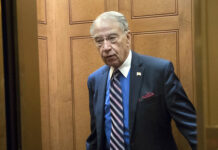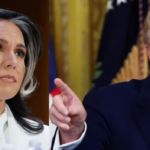
A media-manufactured controversy between President Donald Trump and Director of National Intelligence Tulsi Gabbard over Iran’s nuclear ambitions was quickly defused this week, as Gabbard directly addressed—and debunked—claims that she contradicted the president during earlier congressional testimony.
The dust-up began when CNN’s Kaitlan Collins attempted to corner President Trump during a press gaggle aboard Air Force One, pointing to Gabbard’s March testimony in which she stated that Iran was not actively building a nuclear weapon. Trump dismissed the question outright:
“I don’t care what she said. I think they were very close to having one.”
This brief remark sent the usual media echo chambers into overdrive, eager to portray a rift between Trump and his top intelligence chief.
Vice President JD Vance promptly addressed the manufactured tension, posting on X that the media failed to grasp context and that “a lot has changed since March.” Vance noted that Iran’s increasing uranium enrichment and IAEA violations suggest the regime’s intent to pursue a nuclear weapon—even if formal authorization hasn’t been given.
Gabbard, not one to let partisan media twist her words, responded directly via CNN’s Sarah Ferris, affirming:
“Pres Trump was saying the same thing that I said in my annual threat assessment back in March. Unfortunately too many people in the media don’t care to actually read what I said.”
The Office of the Director of National Intelligence (ODNI), through deputy chief of staff Alexa Henning, released the full portion of Gabbard’s March testimony, confirming there was no contradiction—only media distortion. Among the key points:
-
Iran is not currently building a nuclear weapon, and Supreme Leader Khamenei has not reauthorized the program suspended in 2003.
-
The IC is closely monitoring whether Iran will resume its nuclear weapons program.
-
Iran’s enriched uranium stockpile is at unprecedented levels for a non-nuclear state—fueling concerns among U.S. allies.
-
The taboo in Iran around discussing nuclear weapons has eroded, likely emboldening hardliners.
-
Iran continues to develop and use advanced missile systems and drones, posing real threats to U.S. assets and allies.
-
Its cyber capabilities are increasingly sophisticated and dangerous.
In essence, Gabbard’s assessment acknowledged that Iran had not yet crossed the red line of weapons production, but was dangerously close, and appeared increasingly willing to pursue a nuclear path.
Full testimony: pic.twitter.com/rfEGiMJsLJ
— Alexa Henning (@alexahenning) June 17, 2025








